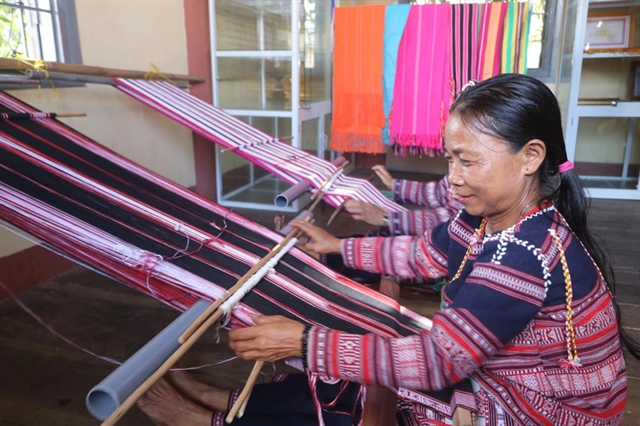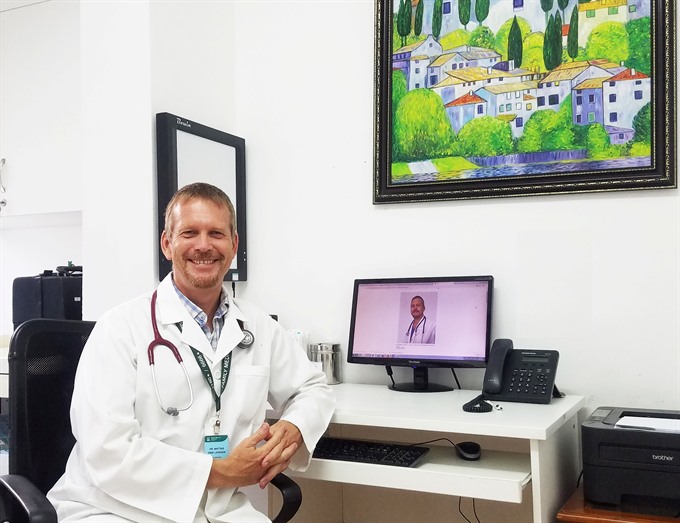 Life & Style
Life & Style

The child of my friend, who is 13 months old, was admitted to a Vietnamese hospital with meningitis. He was treated for two weeks and recovered. During the third week he developed a blood infection. Despite being treated with the strongest broad-spectrum antibiotics, he died.
 |
| Dr. Mattias Larsson. — Photo courtesy of Family Medical Practice |
By Dr. Mattias Larsson*
The child of my friend, who is 13 months old, was admitted to a Vietnamese hospital with meningitis. He was treated for two weeks and recovered. During the third week he developed a blood infection. Despite being treated with the strongest broad-spectrum antibiotics, he died. I was at the hospital working and got involved. I have spent 20 years researching the use of antibiotics and resistance to them in Việt Nam and other countries. With this tragedy, it became personal and affected me deeply.
Working with the Vietnamese healthcare sector for two decades, I have watched in ‘real-time’ the deterioration of the effectiveness of antibiotics where we now have ‘super-bugs’ spreading everywhere that can cause infections that are untreatable. How did we get here?
Antibiotics are one of the pillars of modern medicine and have contributed to the enormous improvement of health that we have seen globally in the past decades. It has enabled the decrease of infections as a cause of mortality and enabled surgery and transplantation.
Antibiotics eliminate some bacteria, including benevolent bacteria that support our metabolism but unfortunately overuse creates resistant strains that cause infections that are difficult to treat. Over time, the effectiveness of antibiotic treatment is eroded and there are not enough new antibiotics being developed to replace those that are no longer effective.
In Việt Nam, antibiotics are frequently used, often when not necessary and easy available at pharmacies. Correct diagnostics are time and resource consuming. Tests are not always available and often more expensive than drugs. When doctors cannot determine if illness is due to virus or bacteria, many prescribe antibiotics. There are economic incentives to sell drugs and drug companies often reward doctors for using their drugs.
In a study conducted in 1999, we interviewed parents about their children’s health, if they had been sick, used any drugs and took samples of bacteria. 75 per cent had used antibiotics in the last month, most without prescription and antibiotic resistance was common. The survey was repeated 7 and 14 years later showing increasing antibiotic resistance where antibiotic tablets are not effective for treatment of bacteria causing pneumonia and urinary tract infections, increasing the need for IV antibiotics, and placing a burden on the healthcare system and costs.
As most of the antibiotics were bought from private pharmacies and used for the common cold – caused by viruses – we did a study on how private pharmacies treat respiratory infections. Questionnaires were used to assess knowledge and fake patients to assess practice. Most pharmacy staff knew that antibiotics cannot treat the common cold. However, half of the pharmacies still dispensed antibiotics. After a three-step intervention, knowledge and practice improved, but still one-third dispensed antibiotics. The reason mentioned was that the pharmacy staff thought that the patients wanted antibiotics even though they knew it might not be necessary. Knowledge might not always be a good predictor of practice.
Antibiotic use in the community might influence the possibility of treating life-threatening infections in hospitals. Resistance genes are often separate from the bacterial genes on plasmids coding for resistance to several different antibiotics, can replicate faster and be transferred directly between bacteria, like data files between computers. When the bacteria are stressed due to antibiotic use, the replication of these resistance genes increases by several thousand times and bacteria give generously to each other – if you give me one shield I give you another and we both survive. This means that if you take one antibiotic, you also select for resistance to other antibiotics. This is a problem in hospitals where a lot of antibiotics are used, especially in intensive care units. Many patients may be admitted with one disease but during treatment, they become colonised with bacteria resistant to almost all antibiotics, so called ‘super-bugs’ causing infections that are very hard to treat with a high risk of death.
In 2013, we assessed the rate of hospital acquired infections at intensive care units in 16 Vietnamese hospitals. Among almost 5,000 patients, one third of both children and adults had hospital acquired infections. Many were caused by ‘super bugs’ that were resistant to almost all available antibiotics. In order to get an infection, a person has to be colonised by bacteria, so we also assessed colonisation with ‘super bugs’ in several hospitals and found that almost half of the patients were colonised.
However, we have also seen that if we can detect colonisation early, at admission, patients that are colonised can be separated from other patients, with the result that the risk of transmission, hospital acquired infections and mortality can be decreased. This shows that in hospitals, it is important to screen for ‘super bugs’ and to have good hygiene, with the beneficial result that there is a decrease in the risk that the ‘super bugs’ spread in the hospital and then out in society.
So – what can you do to preserve the power of antibiotics for our children and grand-children? Most importantly, don’t use antibiotics without a doctor’s prescription. When you choose where to go for examination, choose a clinic that can provide good diagnostics, then take the relevant tests that give you a clear diagnosis. By doing this, you will avoid unnecessary antibiotic use and help keep antibiotics effective for when they are really needed. As a bonus, you will decrease the risk of adverse drug reactions and diarrhoea as well as keep alive the good bacteria that help our metabolism and which can also affect our mental wellbeing. — Family Medical Practice
*Dr. Mattias Larsson first came to Việt Nam in 1997 conducting research on child infections and antibiotic use and resistance. In 2003, he defended his PhD and graduated from his medical training. Since then he has spent about half of his time in Sweden working as a physician in pediatrics and infectious diseases, the other half in Việt Nam and other developing countries working with medical training and research. He will complement the team at Family Medical Practice, and intends to participate in the development of diagnostics care and treatment towards the best international evidence based standards.
For more advice on any medical topics, visit Family Medical Practice Hanoi at: 298 I Kim Mã, Ba Đình. Tel: (024) 3843 0748. E: hanoi@vietnammedicalpractice.com.
FMP’s downtown Hồ Chí Minh location is: Diamond Plaza, 34 Lê Duẩn, District 1; 95 Thảo Điền Street, District 2. Tel: (028) 38227848. E: hcmc@vietnammedicalpractice.com
FMP Đà Nẵng is located at 96-98 Nguyễn Văn Linh Street, Hải Châu District, Đà Nẵng. Tel: (0236) 3582 699. E: danang@vietnammedicalpractice.com.




